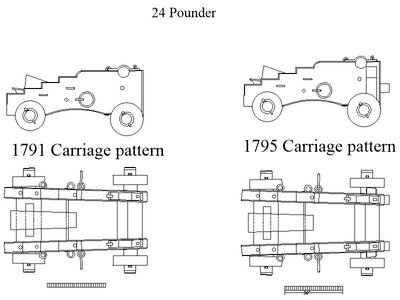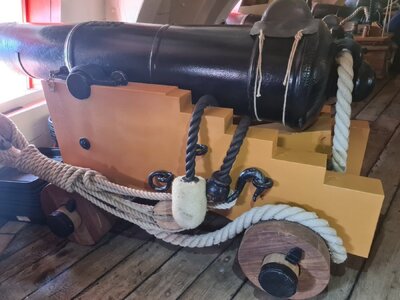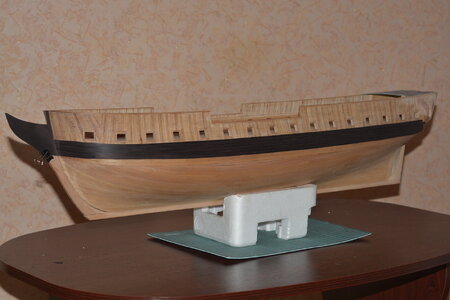Some photos of an Armstrong Frederick carriage follow. Things such as the stays will likely never be seen by casual observers so the amount of detail that goes into it is, as always, up to the individual model builder. For a larger scale desk top model I tend to add all the details, but if I am making 30 smaller scale carriages that will be on a lower gun deck and not visible that, for me, is another story.
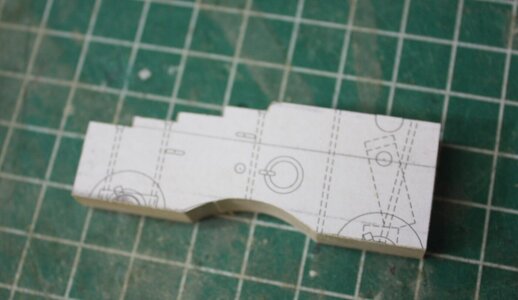
In the photo below the brackets are temporarily assembled and have an extra piece of sacrificial wood on top in preparation for drilling the place where the cannon trunnion will sit.
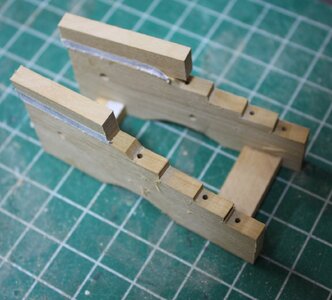
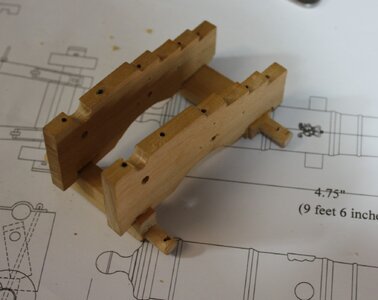
The below is an axle cutter made from scrap brass. I have made them in various sizes for rounding the ends of the truck axles.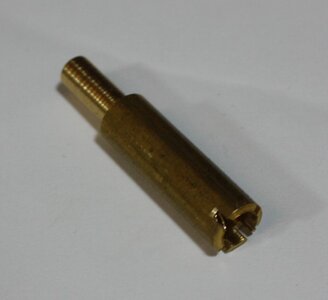
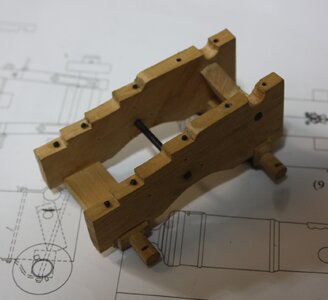
The picture below show the stays in place. on the front axle. As I used copper, once secured they are blackened with a diluted liver of sulfur and a small paint brush then rinsed. LoS will not stain the wood.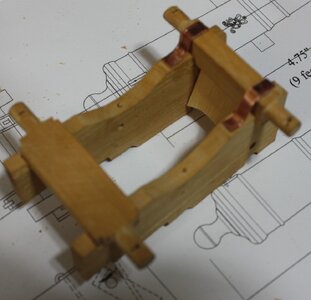 The cap square is also made of copper and blackened with liver of sulfur. In this scale (1:24) the cap squares are working pieces.
The cap square is also made of copper and blackened with liver of sulfur. In this scale (1:24) the cap squares are working pieces.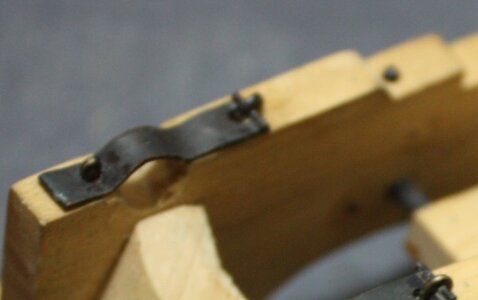
If using hand tools, the stool bed requires some chisel work for the groove but can be done with a back saw and hobby knife.
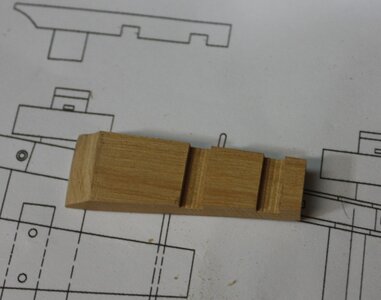
Linchpins are also made from copper then blackened with liver of sulfur after they are set in place.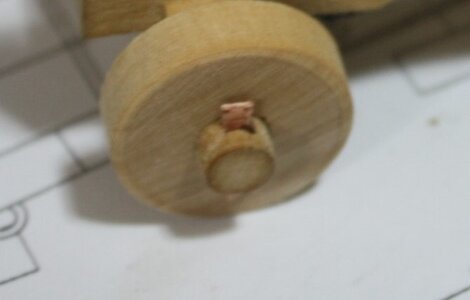

Finished cannon and carriage
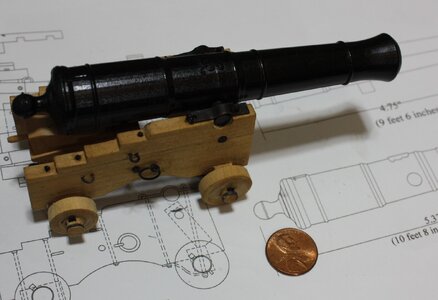

In the photo below the brackets are temporarily assembled and have an extra piece of sacrificial wood on top in preparation for drilling the place where the cannon trunnion will sit.


The below is an axle cutter made from scrap brass. I have made them in various sizes for rounding the ends of the truck axles.


The picture below show the stays in place. on the front axle. As I used copper, once secured they are blackened with a diluted liver of sulfur and a small paint brush then rinsed. LoS will not stain the wood.
 The cap square is also made of copper and blackened with liver of sulfur. In this scale (1:24) the cap squares are working pieces.
The cap square is also made of copper and blackened with liver of sulfur. In this scale (1:24) the cap squares are working pieces.
If using hand tools, the stool bed requires some chisel work for the groove but can be done with a back saw and hobby knife.

Linchpins are also made from copper then blackened with liver of sulfur after they are set in place.


Finished cannon and carriage





